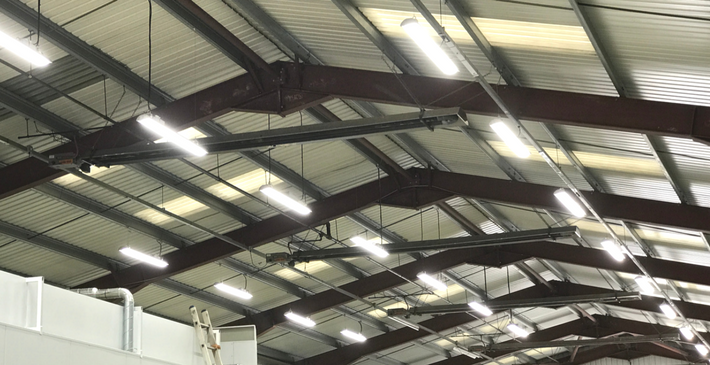
Standalone lighting controls allow ‘standalone’ control of the lighting within a space, typically a single room. Controls may include switches, occupancy sensors, photocells and time clocks (see below), which are typically hard-wired to control fixed groups of lights independently. Adjustment of these needs to be made manually at each device location.
For more information on standalone lighting controls, see Standard Local Controls.
In contrast a centralised lighting control system refers to an intelligent networked system of devices relating to lighting control. The system has user inputs, a processing unit with a programme to process the signals (typically centralised within a building) and a method of controlling the lighting fixtures based on the outputs of the programme. The control programme can usually be changed centrally. The application of local controls such as occupancy sensors can be varied according to time of day, time of year and other input conditions.
User inputs may be made locally by switches, occupancy sensors, photocells, centrally at central processing units via software programmes, or remotely by smartphone / online app. The system may also accept signals from other building systems, such as fire alarms.
Centralised lighting controls allow the building manager to have centralised control of all of the circuits in a building from a single user interface or app.
Smart Building technology can run on WiFi, but it is generally better to install a cabled system using low voltage cables to connect devices and circuits to a central processing hub. For commercial buildings, the systems are generally installed in new builds or as part of major building renovation. For domestic properties, the WiFi system may be deemed adequate.
A lighting scene is a set of lighting levels for a set of lighting circuits designed for a specific task. For example, a ‘cleaning’ scene might have higher light levels for space illumination, whilst other scenes are set to create a certain ambience or mood.
The scene can be selected with one button, rather than having to set the level of each lighting circuit individually. Note that the controls will need to allow for an ‘off’ scene.
An obvious application of scenes is to turn all lights in a space off at once. A typical conference room might have scenes to allow a discussion, to allow watching of a presentation, or for entertaining in the evening. There will also be a cleaning scene and an ‘all off’ scene:
The control panel might also allow for the blinds (e.g. North blinds, South blinds) to be opened, closed, raised or lowered. A typical keypad to achieve this would look like this:

Lighting control systems typically allow adjustment of the output of a light fitting or combination of light fittings based on:
For more information on occupancy sensors and daylight harvesting, see Standard Local Controls.
There are various ‘protocols’ underlying control of lights. The most popular protocols in commercial and residential dimming are DALi, 0-10V and phase dimming.
Copyright © Spirit Energy 2026 · info@spiritenergy.co.uk · 0118 951 4490
Jobs and Careers
Interested in joining the Spirit team? Email jobs@spiritenergy.co.uk
Spirit House, 25 Albury Close, Reading, RG30 1BD
(Location formerly known as 44 Portman Road, Reading, RG30 1EA)
Spirit Energy is the trading name of Spirit Solar Ltd · UK Company Number 07138647
Although care is taken to ensure that the information on our website (www.spiritenergy.co.uk) and any guides, calculators or checklists provided by us, electronically or otherwise, are accurate and up-to-date, we cannot accept any responsibility for mistakes or omissions. We enter into no express or implied conditions, warranties, terms or representations regarding the quality, accuracy or completeness of the information. We exclude to the extent lawfully permitted all liability for loss or damage, whether direct, indirect or consequential arising out of your use of our website or any guides, calculators or checklists provided by us, or from any information or omission contained in our website or any guides, calculators or checklists provided by us.